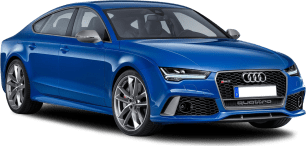Full disclosure. My preference when it comes to Porsche propulsion is pistons in cylinders; ideally six of them, horizontally opposed.
But if the Taycan is on your shortlist you’re ready to move past internal combustion and there is no doubt this car is properly quick.
The entry-level RWD model accelerates from 0-100km/h in 4.8sec (0.6 faster than the outgoing model) with the Taycan Turbo S at 2.4sec which is hypercar fast.
Porsche admits to having played around with some dual-clutch transmission-type mimicry along the lines of the Hyundai Ioniq 5 N. But the boffins in Zuffenhausen left that to one side due to concerns over compromise to the car’s point-to-point ability. Porsche seemingly can’t entertain anything that makes a car slower.
It did, however, install a push-to-pass function on dual-motor versions which gives you a 10-second burst of extra performance which is fun.
Suspension is by forged alloy double-wishbone front and rear with some extra links at the back.
Adaptive air suspension is standard across the range, and ‘Active Ride’ is fitted to the upper variants which takes things one step further.
And it does ride very nicely. The launch drive covered second-class, coarse-chip B-road type surfaces and the Taycan smooths the road out beautifully.
Standard wheel diameter is 19-inch for the entry-grade, 20s for the 4S and Turbo, then 21s on the Turbo S. The cars on the launch program all featured 21-inch rims shod with Goodyear Eagle F1 or Michelin Pilot Sport 4 rubber and even on those big wheels the car still rides well.
In terms of the steering… hey, it’s a Porsche. It’s fantastic. Accurate and direct without being too jerky or snappy. It does exactly what you want the car to do. The connection with the front tyres feels like it’s almost direct.
This car may be lighter than its predecessor but all models are over 2.0 tonnes so you’d expect it to be heavy and slow. It’s not. Point and accelerate through corners with supreme confidence. It’s beautifully balanced. What you’d expect from a Porsche performance car.
Physical braking is by big ventilated discs all around with six-piston aluminium monobloc fixed-calipers at the front and four-piston units at the rear. Suffice it to say they wash off speed effectively.
Believe it or not the Turbo S’s front brake calipers contain no less than 10 pistons, clamping ceramic composite rotors. We gave all Taycan variants a solid workout on the Baskerville Raceway just north of Hobart and stopping power felt as strong and effective at the end of the session as it did at the start.
There’s also improved recuperation capacity for the regenerative braking system, up 30 per cent from 290 to 400kW.
In terms of miscellaneous observations, beware the 11.7m turning circle. What might appear to be a three-point turn situation often turns into a five-pointer.
And entry to cars fitted with Active Ride is made easier (when activated). As soon as a door is opened, the body raises by 55mm. May seem OTT but it makes life with the Taycan that bit better.

